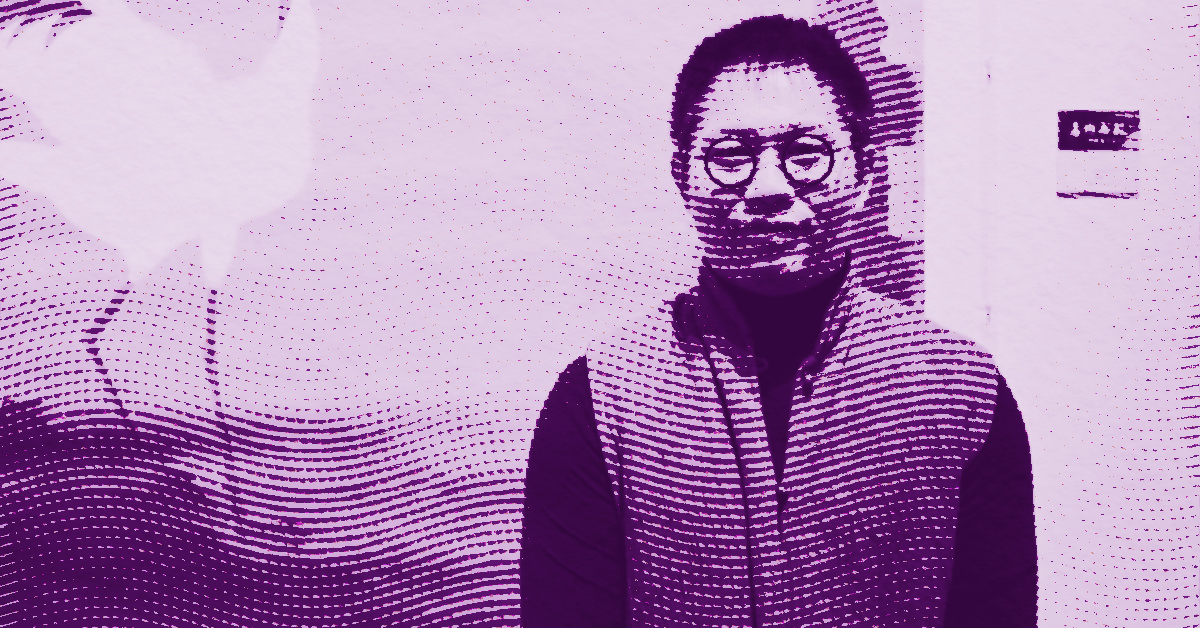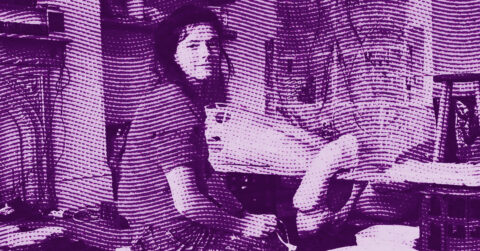Listen to me carefully, you bunch of snobs: here is an artist who does not play in the same league as your little favorites of the contemporary art market. Mao Jingqing, born in 1984, graduate of the China Academy of Fine Arts, cares nothing for your fleeting trends and conceptual installations. This man digs into the Song tradition with the persistence of an archaeologist and the precision of a surgeon to extract a poetry that astonishes by its accuracy and contemporaneity.
While his contemporaries chase after the latest Western fashions, Mao Jingqing chooses the most arduous path: that of creative fidelity to a millennial heritage. A disciple of Xiao Feng and Song Ren during his years of study, then academic secretary of the former for nine years, he then had the honor of becoming the last disciple of Chen Peiqu, the uncontested master of traditional Chinese painting. This lineage is not anecdotal; it constitutes the very foundation of his artistic approach.
The Heritage of the Song: An Aesthetic of Perfection
Song painting represents the pinnacle of Chinese pictorial art, particularly in its court painting dimension. The artists of this time had developed an approach combining meticulous observation of nature and poetic feeling, creating works of striking beauty where every detail counts. Mao Jingqing is part of this tradition with a keen awareness of what it represents. His series Nouvelle Rivière Qingming, created for the Alibaba pavilion during the G20 summit in Hangzhou, demonstrates this ambition: to take up the visual codes of Song masters to tell our era.
Chen Peiqu’s influence on his work goes beyond mere technical transmission. Chen Peiqu had dedicated years to systematically annotating the Complete Collection of Song Paintings, a titanic scholarly work that Mao Jingqing had the privilege to study in its entirety. These annotations are a real artistic treasure for him, a key to understanding the subtleties of Song art that escape most contemporary practitioners.
In his works such as One Hundred Flowers or One Hundred Lotuses, Mao Jingqing deploys this technical mastery inherited from the Song while infusing it with contemporary sensitivity. His floral compositions are never mere exercises in style; they embody a meditation on beauty, fragility, and permanence. The treatment of space, economy of means, and precision of line reveal an artist who has integrated the lessons of his masters to surpass them.
The technique of meticulous painting (gongbi) that he practices brilliantly demands a patience and precision that our era of immediacy tends to neglect. Every petal, every leaf, every stem is rendered with an attention bordering on devotion. This approach stands in diametrical opposition to Western contemporary art, often marked by spontaneity and raw expressiveness.
Dostoevsky and the Art of Spiritual Depth
There is a troubling kinship between Mao Jingqing’s artistic approach and the aesthetic of Dostoevsky, that obsessive quest for truth that permeates the work of the Russian master [1]. In Dostoevsky, every detail, every psychological nuance contributes to a global architecture aimed at revealing the depths of the human soul. Similarly, in Mao Jingqing’s work, every pictorial element is part of a broader search for the spiritual essence of his subject.
Mao Jingqing’s art shares with Dostoevsky’s universe this ability to transform the ordinary into the extraordinary, to reveal a metaphysical dimension in the everyday. While Dostoevsky dissects the meanders of his characters’ consciousness with clinical precision, Mao Jingqing dissects the structure of a flower or the texture of a petal with the same revealing intensity. This analogy is no coincidence: the two artists share a conception of art as revelation, as the gradual unveiling of a hidden truth.
The influence of this Dostoevskyan approach is particularly evident in Mao Jingqing’s Cent Lotus series. Each lotus is treated there as a unique individual, with its own personality, its own nuances, its own mysteries. This individualization of the floral motif evokes the way Dostoevsky constructs his characters: never types, always singular beings, irreducible to a category.
The temporal dimension also plays a major role in this aesthetic kinship. Dostoevsky unfolds his narratives within a psychological duration that exceeds chronological time, creating moments of eternity in which the essence of his characters is revealed. Mao Jingqing proceeds similarly in his painting: his flowers seem suspended in a time that is neither that of blossoming nor of fading, but that of an eternal beauty escaping temporal contingencies.
This approach reveals in Mao Jingqing a conception of art that goes beyond simple representation to reach a form of intuitive knowledge. Just as Dostoevsky uses fiction to explore the unexplored territories of the human psyche, Mao Jingqing uses traditional Chinese painting to probe the mysteries of nature and beauty. This approach requires a form of asceticism, a stripping away of the self that allows the artist to serve his subject rather than enslave it to his personal effects.
The Invisible Architecture of Tradition
Mao Jingqing’s art reveals a deep understanding of what one might call the invisible architecture of the Chinese pictorial tradition. This architecture does not arise from mere technique, although technical mastery is essential, but from an internal logic governing the organization of pictorial space, the distribution of masses, the balance of fullness and emptiness.
This architectural logic is strikingly manifested in his New Qingming River, a monumental work on silk created for the Alibaba pavilion. The artist deploys there a composition of astonishing complexity, where each element finds its place in a perfectly orchestrated whole. This ability to master the grand composition while preserving the precision of detail attests to a remarkable artistic maturity for a man of his generation.
Traditional Chinese architecture is based on principles of proportion and harmony that find their equivalent in Mao Jingqing’s painting. The use of negative space, the creation of visual rhythms through repetition and variation, the balance between density and emptiness reveal an architectural sensitivity that goes beyond simple two-dimensional representation.
In his paintings of flowers and birds, this architectural logic is expressed through an underlying geometric construction that organizes the composition without ever imposing itself visually. The lotus stems draw invisible axes that structure the space, the leaves create planes that give depth, the blooming flowers constitute focal points that guide the gaze. This secret architecture gives his works a solidity and presence that distinguish them from decorative exercises.
The kinship with architecture also appears in his conception of pictorial time. Like a building that spans centuries while maintaining its function and beauty, Mao Jingqing’s paintings seem designed to defy temporal wear. This ambition for permanence, inherited from the Song tradition, gives his work a monumental dimension that owes nothing to the physical size of the canvases.
His architectural approach also reveals a conception of art as a collective construction. Each work fits into a larger whole, that of the Chinese pictorial tradition, of which it constitutes a new element without breaking from the existing. This creative continuity, which characterizes great artistic traditions, makes Mao Jingqing an essential link in the chain of transmission of Chinese art.
The Embraced Modernity of a Traditionalist
Contrary to appearances, Mao Jingqing is not a nostalgic fixed in the contemplation of the past. His artistic approach demonstrates an assumed modernity that feeds on tradition to better face contemporary challenges. His work on the series Splashed Ink in Thirty-Two Pieces reveals another facet of his talent, influenced by the innovations of Zhang Daqian and Chen Peiqu in their last creative periods.
This series marks a significant evolution in his artistic journey. The influence of the masters of splashed ink, a technique that allows freer expressiveness while preserving the sophistication of the Chinese tradition, opens new perspectives for his art. The prices achieved by this series on the art market, notably nearly €500,000 obtained for Splash – Color x 32 (泼彩册水系列三十二片) at Sungari International Auction in 2023, attest to the international recognition of this stylistic evolution [2].
His position as an associate professor at the China Academy of Fine Arts gives him a particular responsibility in passing on these traditional knowledges to new generations. This pedagogical role enriches his own artistic practice by forcing him to theorize his intuitions and explain his aesthetic choices. Teaching thus becomes a laboratory where stylistic innovations are tested and refined.
The exhibition Song Yun Feng Ya (Song Elegance) held in 2022, then the major exhibition Yi Yun Wu Ji (Infinite Cloudy) at the Zhejiang Provincial Museum in 2023, showcasing more than eighty works covering twenty years of creation, testify to the maturity of his artistic journey [3]. These exhibitions reveal an artist capable of expressing his vision across all traditional genres: landscape, figures, flowers, and birds.
The Ethics of Perfection
What strikes about Mao Jingqing is his refusal of ease and his constant demand on himself. In an artistic world often dominated by trends and the search for spectacle, he chooses the path of patient deepening and the pursuit of perfection. This ethic of perfection, inherited from his masters, constitutes the very foundation of his creative approach.
His philanthropic works, such as donations of paintings for various charitable causes, also reveal a conception of art as a service to the community. This social dimension of his artistic commitment aligns with the traditional Chinese literati tradition, where the artist has moral responsibilities towards society.
The international recognition of his work, manifested by his participation in the Davos Forum and G20 events, attests to his ability to dialogue between tradition and modernity on the global art stage. This international openness does not dilute his artistic identity; on the contrary, it reveals it in all its cultural specificity.
Mao Jingqing embodies a possible path for contemporary Chinese art: that of a rooted modernity drawing strength from tradition to renew the artistic language. His work demonstrates that it is possible to be fully contemporary without renouncing one’s cultural heritage, and even that this creative fidelity is the sine qua non condition for true artistic innovation.
This artist reminds us that greatness in art does not lie in spectacular originality, but in the ability to resonate with the deepest harmonics of tradition to create a new beauty. In this, Mao Jingqing establishes himself as one of the most authentic voices of contemporary Chinese art today, a creator who honors the past while preparing the future.
- Dostoevsky, Fyodor, Diary of a Writer, translated by Gustave Aucouturier, Paris, Gallimard, 1972
- Sungari International Auction, results of the sale on 07/01/2023 in Beijing, Work titled “Splash – Color x 32” (泼彩册水系列三十二片), lot no. 5634, Drawing-Watercolor, Ink, color/paper, 32 works on paper sized 27 x 24 cm.
- Zhejiang Provincial Museum, exhibition catalog Yi Yun Wu Ji – Mao Jingqing, Hangzhou, 2023
















